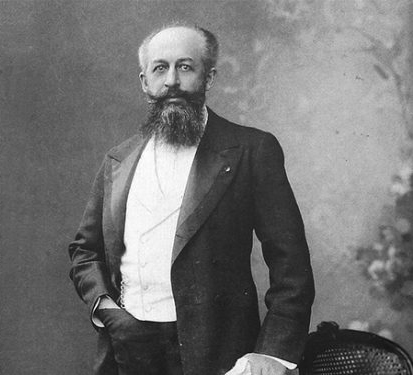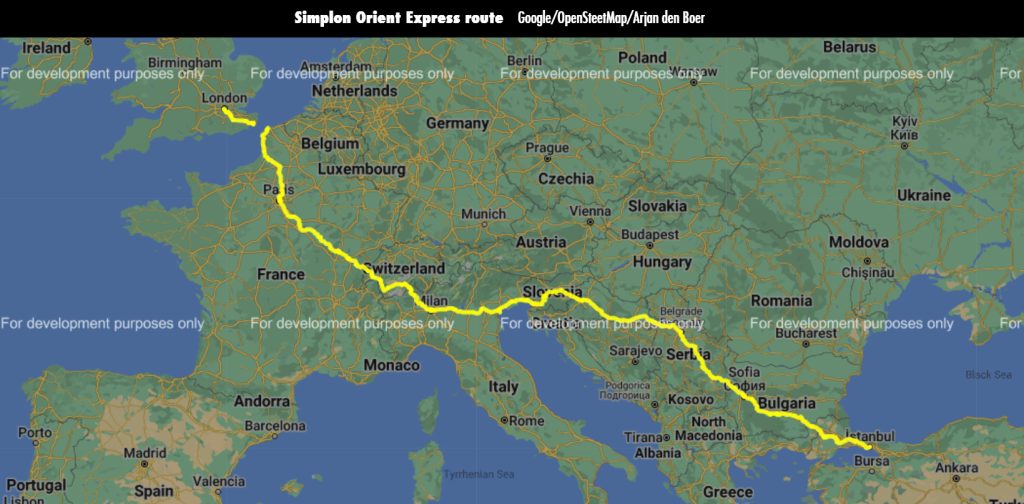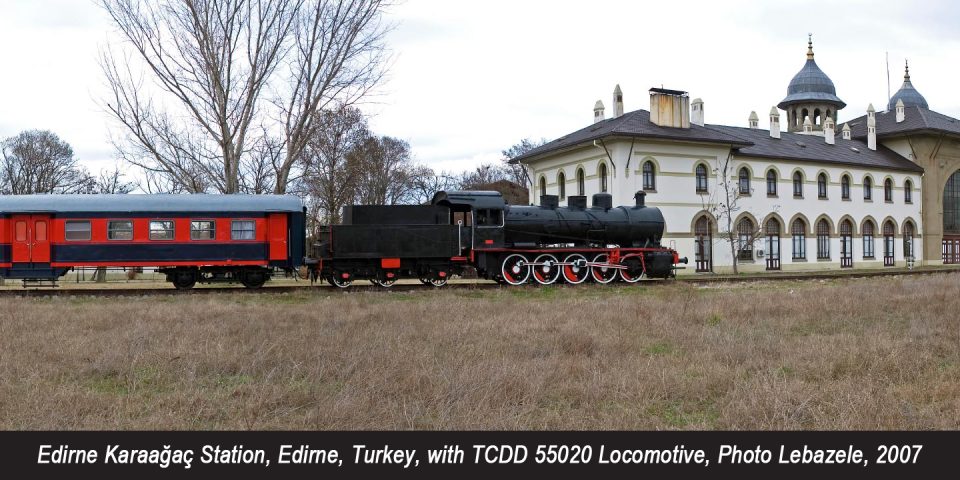To most people the Orient Express is more an idea than a tangible entity. The vision that comes to our mind are those of opulence, kings, aristocrats and wealthy on extravagant travel excursions aboard the most luxurious train in the world, traveling through exotic cities across Asia and Eastern Europe. True life characters as well as fictional characters capture our imagination, including Hercule Poirot, solving the most famous murder aboard The Orient Express, or James Bond, on a secret mission, riding the train from Istanbul to London. We are probably all familiar with the highly popularized book, “Murder on the Orient Express,” of 1934 written by Agatha Christi. Christi’s book gained what could be called a cult following and fed the imaginations of travelers for decades.
King of Trains aka Train of Kings
Many kings travelled on the Orient Express during its heyday, some exhibiting weird behavior.
- Ferdinand of Bulgaria, an amateur engineer, liked to ride on the Orient Express. While it was in other countries, he would lock himself in the toilet afraid of anarchist assassins. However, when the trained entered into Bulgaria, much to the horror of the train engineers, he demanded to drive the train and would accelerate to perilously high speeds.
- Belgium’s King Leopold II made elaborate plans to infiltrate a Turkish man’s harem and travelled to Istanbul to implement them
- Czar Nicholas II demanded that special cars be built for his visit to France
- French President Paul Deschanel clumsily tumbled from one of these cars in the dead of night, the public ridicule eventually prompted him to resign
Spies’ Express
During the height of its popularity, The Orient Express, also earned the name “Spies’ Express.” Continent-hopping secret agents loved the train, writes Cookridge, since it simply “made their jobs so much easier and their travels much more comfortable.” An Englishman spy named Robert Baden-Powell, posing as a lepidopterist [https://www.merriam-webster.com/dictionary/lepidopterist] in the Balkans, made intricate sketches of butterfly wings which were actually color-coded representations of the fortifications he spotted along the Dalmatian Coast. His sketches assisted the British and Italian navies during World War I.
During both WWI and WWII the service of the Orient Express was severely limited. November 11, 1918, German officers were forced to sign the surrender document in an Allied commander’s Wagons-Lits car, which he used as a mobile conference room.
The French proudly exhibited Allied commander’s Wagons-Lits car in Paris until June 1940. Hitler ordered that that particular train car be hauled to the precise spot where The Allies had forced the Germans to surrender 22 years before. It was from this train car, at this specific location, that Hitler dictated the terms of French surrender. As Hitler appeared to be losing, he ordered that the car be blown up, lest it “become a trophy of the Allies once more.”
The Birth of The Orient Express
The concept of globetrotting tourism was still new in the 1860s. For years, the ultra-rich had been the only people who could afford to travel through Europe. Although railroads were introduced in the first half of the 19th century, they were often dirty and uncomfortable and jostled along fragmented routes that often ground to a halt at the continent’s many international borders. The Orient Express was the first and most luxurious train in European history.

The Orient Express Train resulted from the heartbreak of a young Belgian engineer, Georges Nagelmackers. Nagelmackers, a member of a prominent Belgian banking family that held investments in European railroads, was sent to the United States by his family in 1867 to help him recover from a failed romance—and while on an extended vacation in the US, he fell in love with the world’s first sleeping cars, chief among them George Pullman’s unprecedented, luxurious “sleeper cars”. Pullman cars were specifically designed for long-distance travel. Upon returning to Europe his enthrallment continued with the sleeping cars, and he elevated the concept higher, leading to luxury trains that could carry passengers straight to the Orient. In the Orient Express: The Life and Times of the World’s Most Famous Train, E. H. Cookridge writes ,Nagelmackers envisioned “a train that would span a continent, running on a continuous ribbon of metal for more than 1,500 miles.”
By 1876, the luxury trains of the Compagnie Internationale des Wagons-Lits (The International Sleeping Car company) (CIWL) were well-known for their unparalleled comfort, decadent decor, impeccable on-board services, and travel agencies throughout Europe. The journey from Paris to Istanbul was approximately 80 hours, which was a dramatic reduction from the usual two-and-one-half months to reach by other transportation. Wealthy passengers, cognizant their journey on the Orient Express represented status of power and wealth, dressed accordingly. The train interior and service rivaled any of Europe’s finest hotels, and during their luxury train ride, they could marvel at intricate wooden paneling, sink into indulgent silk bed sheets, wrap up in finest wool blankets, or relax in deluxe leather armchairs.
After a number of false starts, financial troubles and difficulties negotiating with various national railway companies, on October 4th, 1883, the inaugural journey, the world’s most fascinating train, Compagnie Internationale des Wagons-Lits, left the Paris station headed on a route for Istanbul, which was then called Constantinople, with forty passengers on board. The newspaper reporters covering the story called it, “Orient Express” and Nagelmackers embraced the name. On one round trip lasting 7 days the geography of Europe was turned upside down; the concept of long-distance travel was now completely redefined. Although the first voyage started in 1883, the uninterrupted arrival of the train from Paris to Istanbul took place in 1889.
On a roll, literally, in 1894 Nagelmackers begins to establish luxury hotels along all the routes of The Orient Express. Palacial, luxury hotels called Compagnie Internationale des Grands Hôtels sprung up from Paris to Peking, Istanbul to Cairo. The Orient Express offered a complete and fully modern experience to its passengers from train car to hotel.
New Simplon-Orient-Express Route

Upon the end of WWII in 1918, a new route is opened through the Alps. In 1919 The midnight blue cars of the first Simplon-Orient-Express train of Orient-Express are unveiled. For the first time in history, Paris connected Istanbul via Milan and Venice via rail as they crossed the Simplon tunnel. The Simplon Tunnel (Simplontunnel, Traforo del Sempione or Galleria del Sempione) is a railway tunnel on the Simplon railway that connects Brig, Switzerland and Domodossola, Italy, through the Alps, providing a shortcut under the Simplon Pass route. It is straight except for short curves at either end.
Between 1926 and 1929 travel-style and life-aboard The Orient Express is elevated by Pullman as designer and decorator René Prou and master glassmaker René Lalique infuse masterpieces of luxury and refinement with French Art Deco influences into new Pullman lounge cars, embodying the excellence of French travel.

The Last Paris to Istanbul Rail Trip is Made
The rise of travel by air was a crushing blow to the railways, and on May 20th, 1977 the Orient-Express made its last direct trip between Paris and Istanbul. Tragically, Compagnie Internationale des Wagons-Lits was forced to sell some of its cars at auction.
What about The Orient Express Today: 20th Century?
Today’s Venice-Simplon Orient Express aims for the opulence of the original, and for the right price, a person can still go for a ride in its restored original Compagnie Internationale des Wagons-Lits cars. Other Tours available at the time of this writing include:
- Venice Simplon-Orient-Express – Paris – Budapest – Bucharest – Istanbul, 6 days from $20,230 per person, August 2023
- Venice Simplon-Orient-Express – Venice & Paris, 2 days from $3,564 per person October and November 2022
- Revisit the golden age of rail travel on board the Venice Simplon-Orient Express and the Belmond British Pullman 6 days Not yet on sale for 2023
- Venice Simplon-Orient-Express in Venice and travel through Northern Italy and the Czech Republic before arriving in the bohemian city of Prague, 2 days, call for pricing
- 5-day luxury rail journey offers travelers a taste of Venice, Budapest and London and unforgettable travel accommodations aboard the Venice Simplon-Orient-Express, call for pricing
- Venice Simplon-Orient-Express – Venice – Verona – Paris – Brussels – Amsterdam, this tour is no longer on sale as an independent tour. Alternative similar tours are available.
Riding The Orient Express: What It’s Really Like On The Iconic Train (travelawaits.com)
Purportedly, according to the OE website, “Orient Express is thrilled to announce the launch of a new collection of luxury hotels and a new collection of travel objects. A new chapter has begun. The Orient Express myth is continuing its legendary journey.” I personally, could not find the list of luxury hotels. Perhaps they are still in the incubating or building stages?
Grace to you and peace from God our Father and the Lord Jesus Christ. Philippians 1:2
Til next time,

References:
- A Journey to History: The Orient Express Story – Pera Palace Hotel
- “THE SIMPLON TUNNEL”. The Capricornian. Rockhampton, Qld: National Library of Australia. 15 October 1904. p. 21. Retrieved 19 March 2013.




